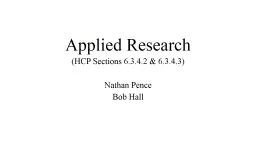PPT-Research Methods for Applied Linguists & Translators
Author : olivia-moreira | Published Date : 2018-03-13
Dr Nazmi Almasri Sept 2017 the Islamic University of Gaza Introduction to research Outline What is meant by research Research purpose Research Characteristics Limitations
Presentation Embed Code
Download Presentation
Download Presentation The PPT/PDF document "Research Methods for Applied Linguists &..." is the property of its rightful owner. Permission is granted to download and print the materials on this website for personal, non-commercial use only, and to display it on your personal computer provided you do not modify the materials and that you retain all copyright notices contained in the materials. By downloading content from our website, you accept the terms of this agreement.
Research Methods for Applied Linguists & Translators: Transcript
Download Rules Of Document
"Research Methods for Applied Linguists & Translators"The content belongs to its owner. You may download and print it for personal use, without modification, and keep all copyright notices. By downloading, you agree to these terms.
Related Documents














